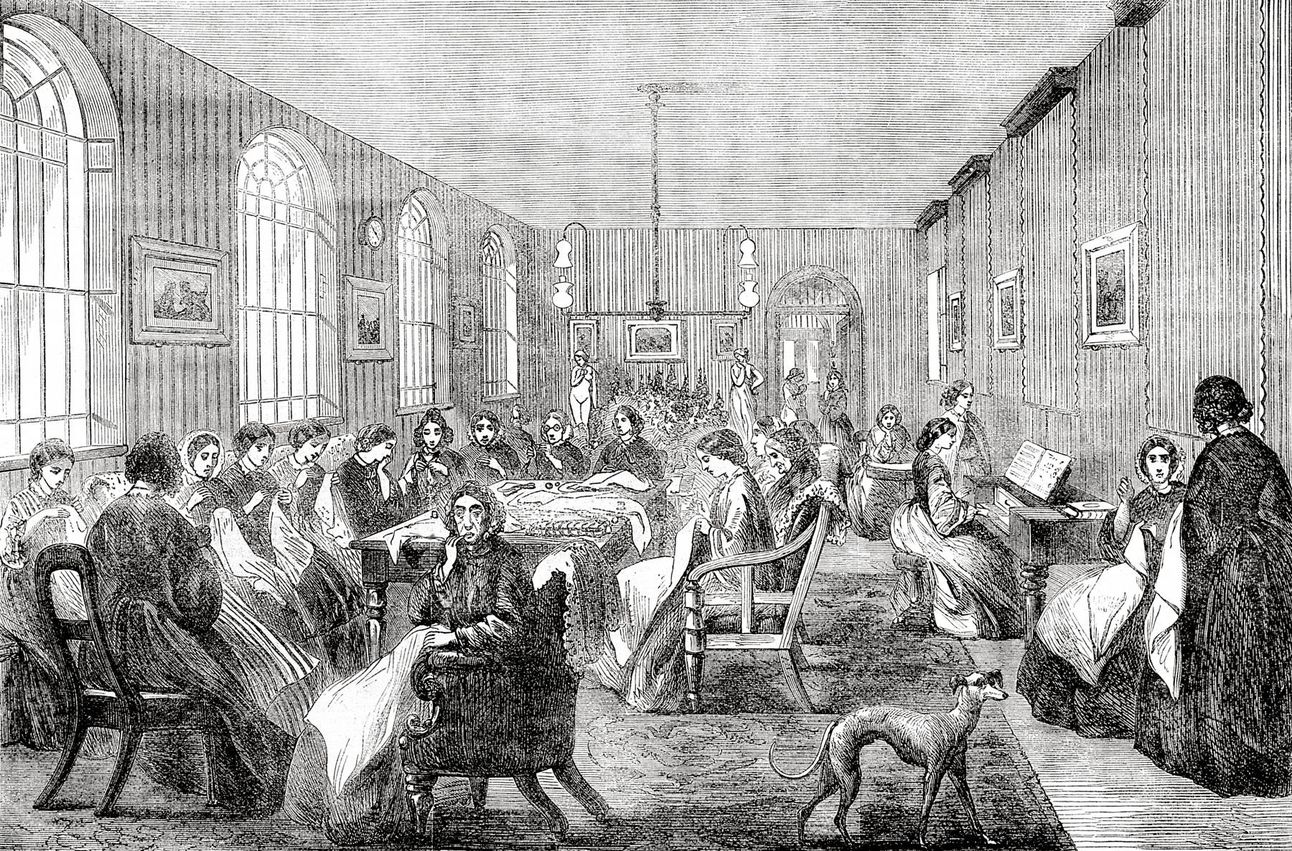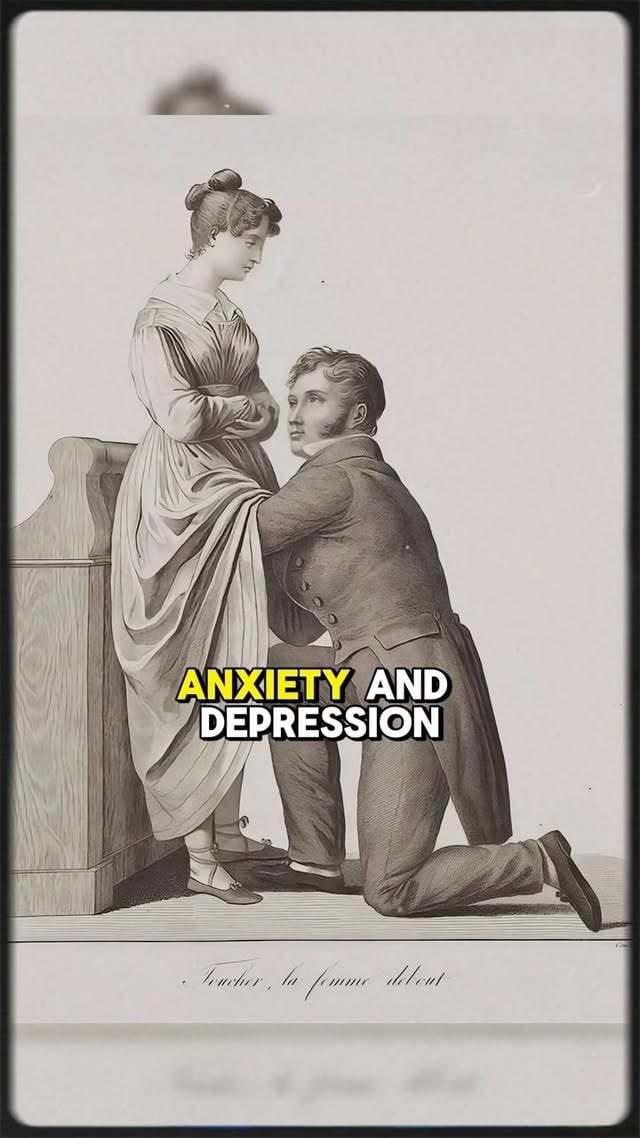- Mental Health Mail
- Posts
- The Mental Health History No One Knows!
The Mental Health History No One Knows!
A timeline of how women’s mental health was misunderstood, mislabeled, and mistreated.
Last week, I posted a video about how, historically, women could go to the doctor… for orgasms… as a treatment for “hysteria.” The most commonly diagnosed mental health issue at the time.
I did not expect this post to strike such a nerve or go viral.
But it did!
Interestingly enough…
The idea of treating “hysteria” with pelvic massage goes way back—like ancient Greece, Rome, and Egypt back. Physicians believed a “wandering womb” caused all sorts of mental and physical issues, and treatments often involved sexual activity.
This went on for around 2000 years, and by the late 1800s, the practice of Inducing what they called “hysterical paroxysm”—what we now recognize as orgasm—was formalized by European physicians.
While the historical accuracy of how widespread this was is still debated, one thing’s clear: women’s real needs were often misunderstood or pathologized—and that legacy still echoes today.
This sent me down a fascinating rabbit hole that had me exclaiming, “WTF!!” and “Really??” late into Saturday evening.
So, here is an overview of the RIDICULOUS history of women’s mental health.
A Timeline of Womens Mental Health
c. 1900 BCE – Ancient Egypt: The Kahun Papyrus blames women’s mental and physical health issues on a "wandering uterus." Treatments included herbs and scented oils.
5th–4th Century BCE – Ancient Greece: Hippocratic medicine promotes the idea of the “wandering womb.” He recommends scent therapy and sex to keep the uterus in place.
1487 – Witch Hunts Begin: The Malleus Maleficarum links women’s mental health symptoms to witchcraft, leading to persecution.
16th Century – A New Theory Emerges: Some doctors begin to believe hysteria comes from the brain, not the womb—starting a shift in the way women’s mental health is viewed.
1725 – Wandering Womb Lives On: Many still believe a moving uterus causes distress. Treatments include scents, sex, and even marriage to “anchor” the womb.
1859 – The 'Rest Cure': Dr. Silas Weir Mitchell prescribes isolation and overfeeding to treat women’s nervous conditions—often making them worse.
1892 – 'The Yellow Wallpaper': Read the full story by Charlotte Perkins Gilman, a powerful critique of the rest cure and the silencing of women.
1914 – Trailblazer Born: Dr. Margaret Morgan Lawrence, the first Black American female psychoanalyst and pediatric psychiatrist, is born.
1963 – Feminism Sparks Mental Health Talk: The Feminine Mystique by Betty Friedan ignites dialogue about women’s mental well-being and societal roles.
1966 – Women Organize: NOW (National Organization for Women) is formed to push for gender equality and medical autonomy.
1980 – PMS Gets Recognition: Premenstrual Syndrome is acknowledged as a legitimate health concern, paving the way for more research.
1987 – PMDD Debuts in DSM-III-R: PMDD is listed as a condition needing further study.
1994 – Violence Against Women Act: VAWA passes to support and protect survivors of domestic and sexual violence.
2006 – #MeToo is Born: Tarana Burke’s movement begins to empower survivors and address systemic violence.
2013 – PMDD in DSM-5: PMDD is officially recognized as a depressive disorder.
2017 – #MeToo Goes Viral: The #MeToo movement expands globally, bringing attention to sexual harassment and its impact on mental health. (it took 11 years!)
2025 – Still Fighting: Center for Reproductive Rights continues advocacy for women’s health, autonomy, and informed care.

🎶 For Every Time You Were Dismissed
You’re not broken—you’re aware.
🎵 “Gaslighter” by The Chicks
A searing, honest takedown of manipulation and gaslighting.
Listen on YouTube →
🎵 “Fall In Line” by Christina Aguilera ft. Demi Lovato
A power anthem for anyone who’s been told to be quiet, shrink, or behave.
Listen on YouTube →
🎵 “Running Up That Hill” by Kate Bush (optional bonus)
For when it feels like you’re climbing uphill through history’s baggage.
Listen on Spotify →
🌱 Wrapping It Up
It’s wild to look back and realize how recent so many of these changes are. And even more wild to realize how much still needs to shift.
I share all this not to overwhelm you—but to remind you:
You come from a long line of women demanding better. (Support them)
You’re not imagining it. (Believe her)
You’re not too sensitive. (She’s not overreacting—she’s reacting.) Your Mood Boost Checklist:
📬Mental Health Mail
Because we can’t rewrite the future if we don’t understand the past.

Portraits of Female Patients Diagnosed with Hysteria (1870s):


